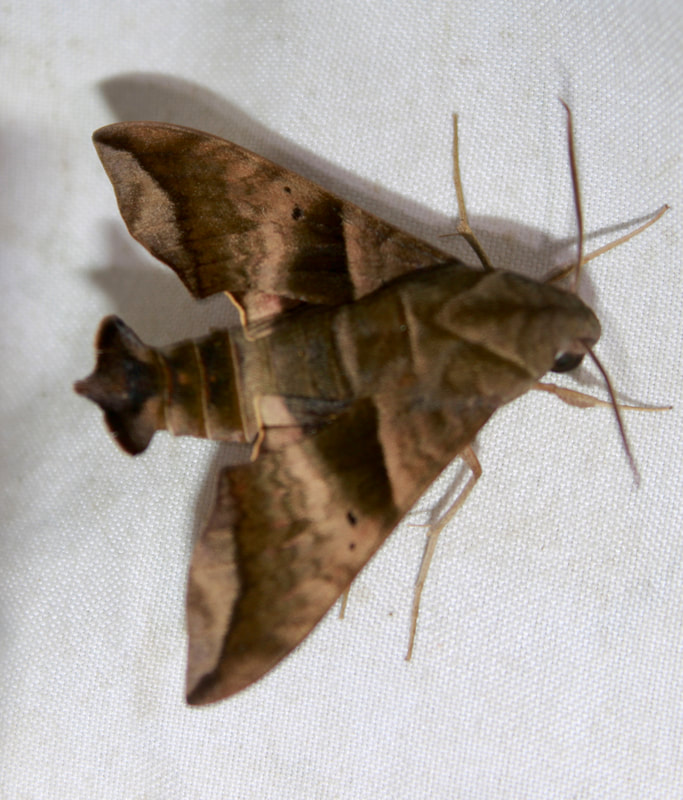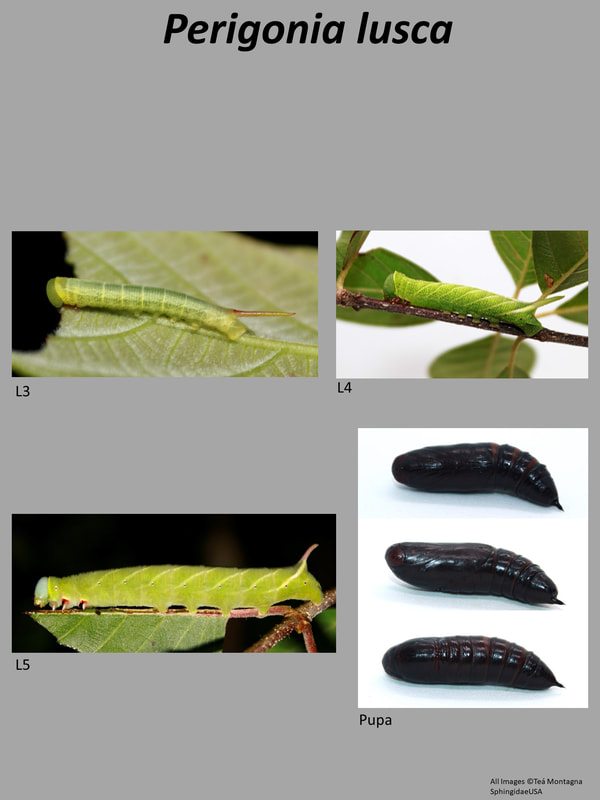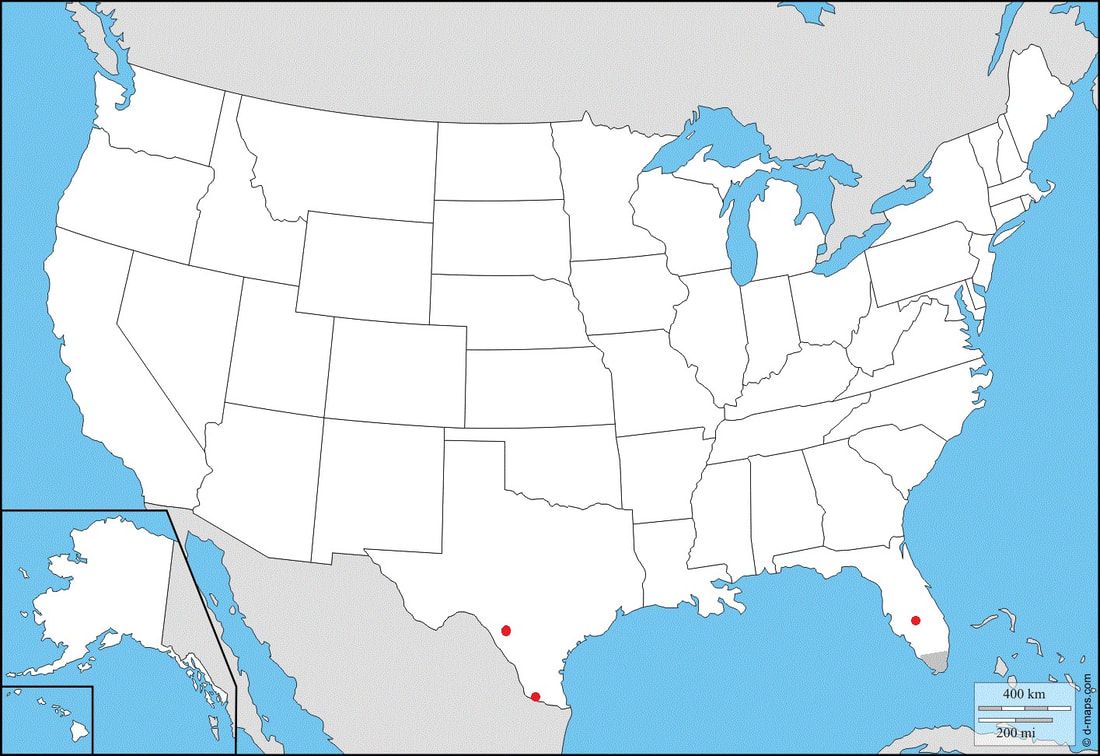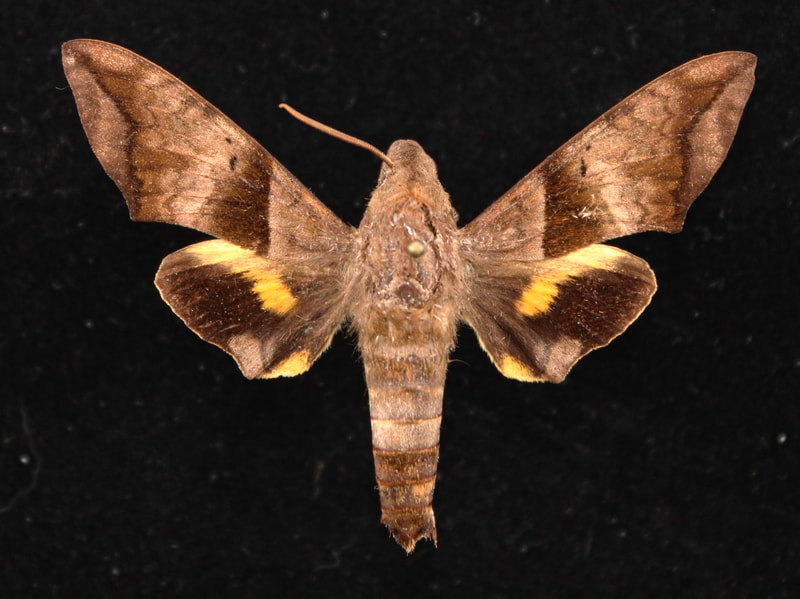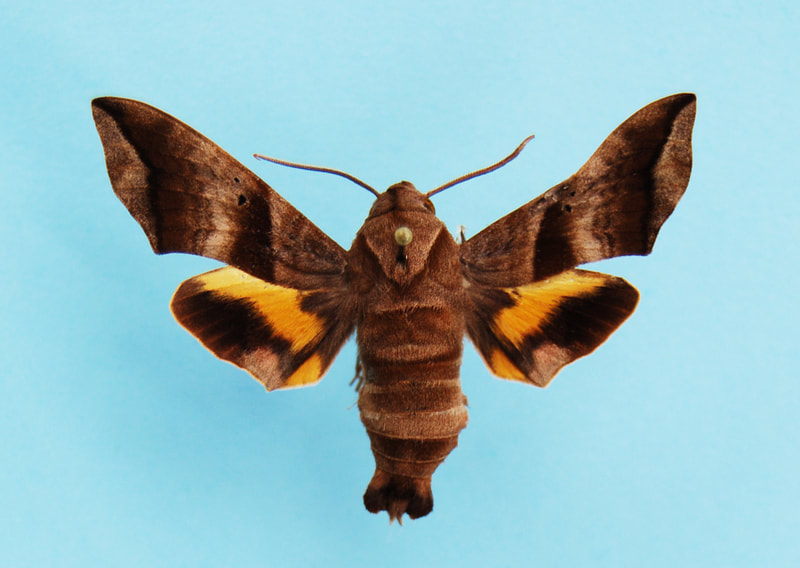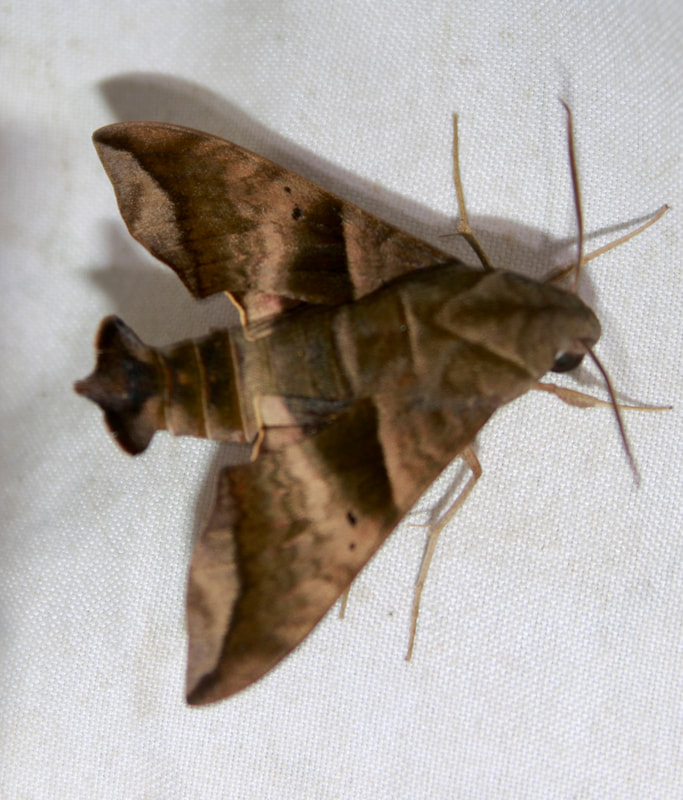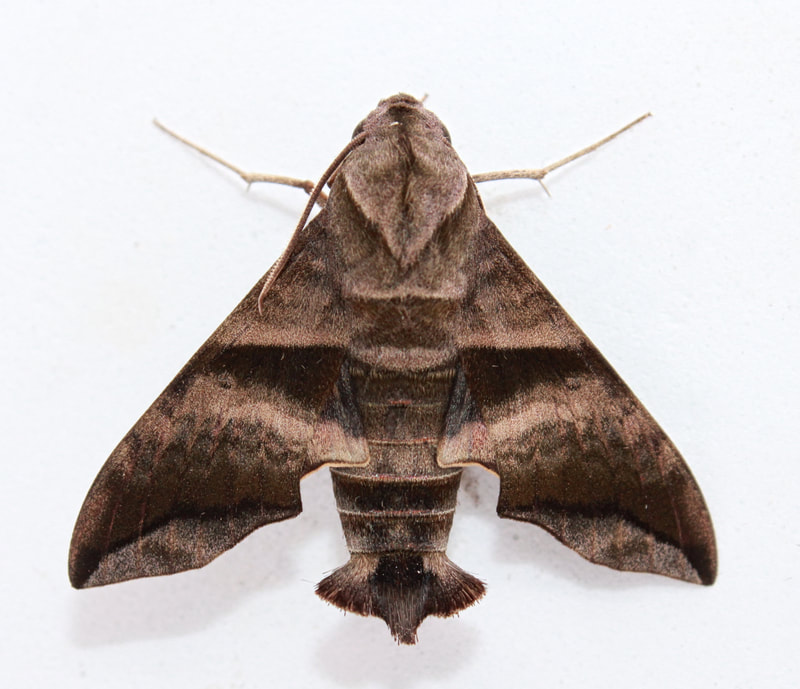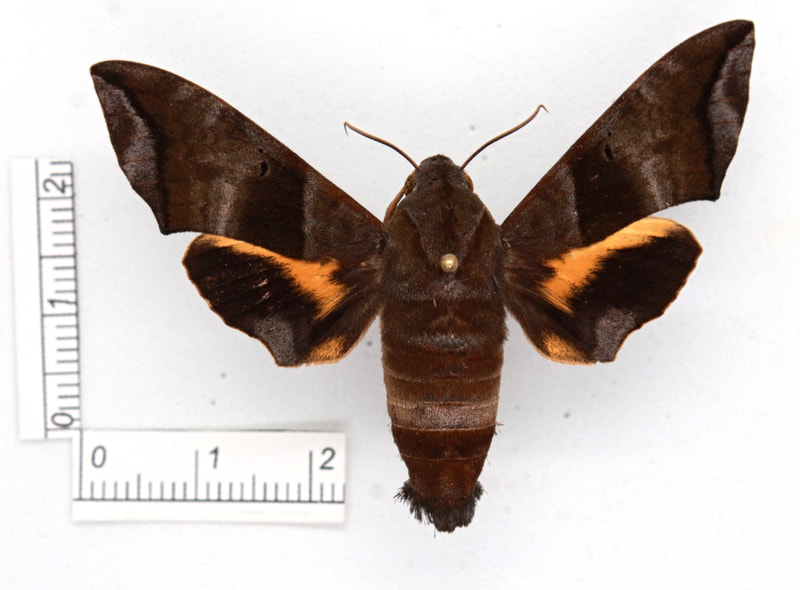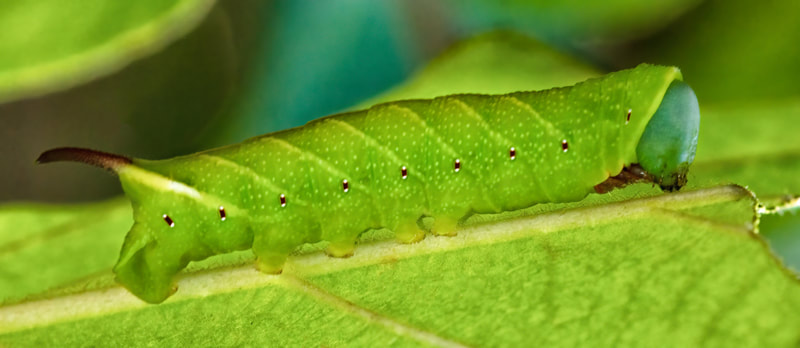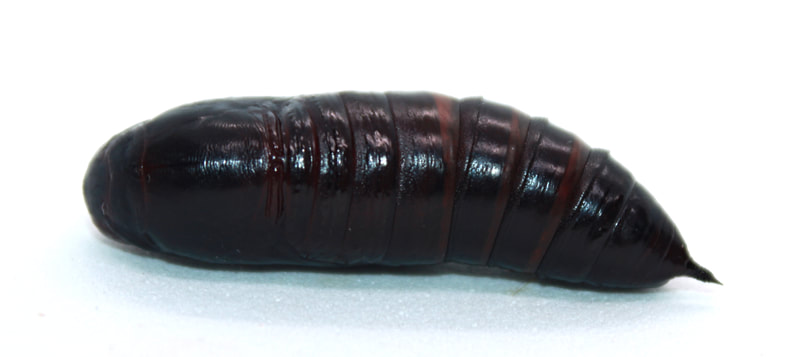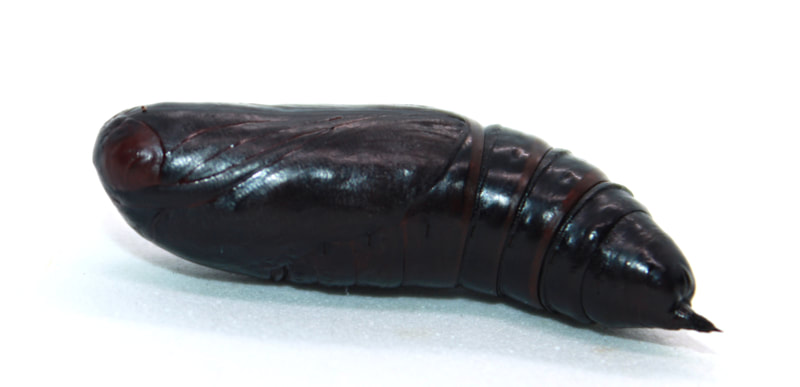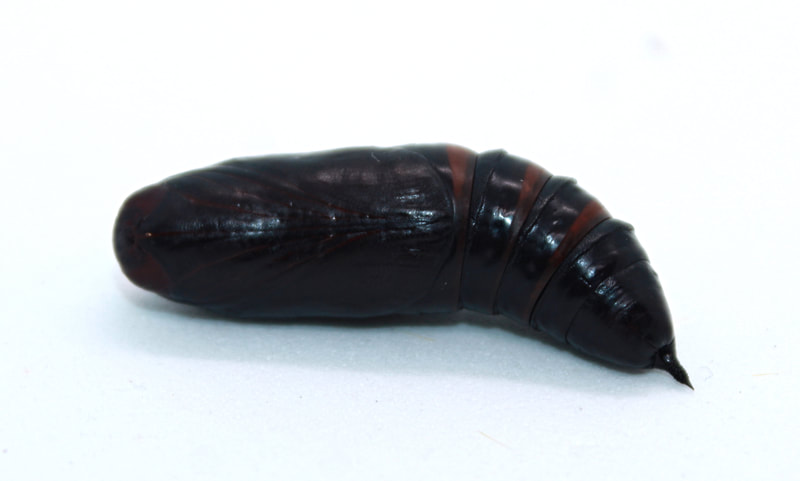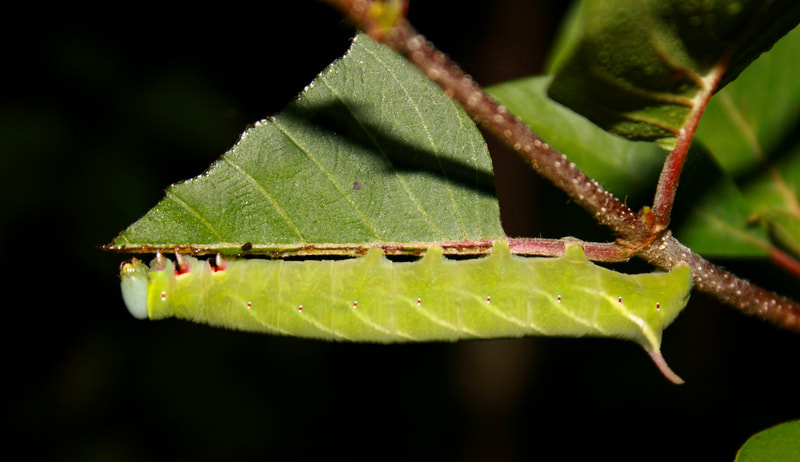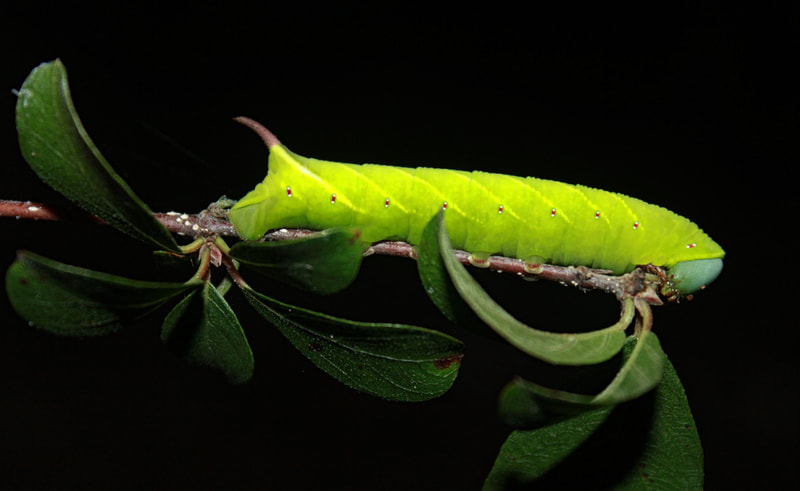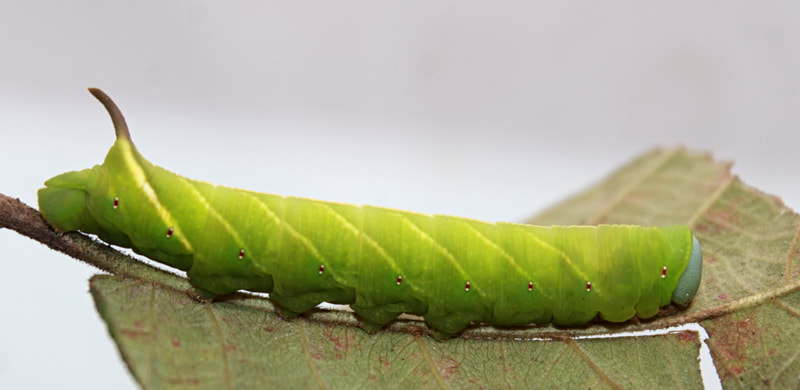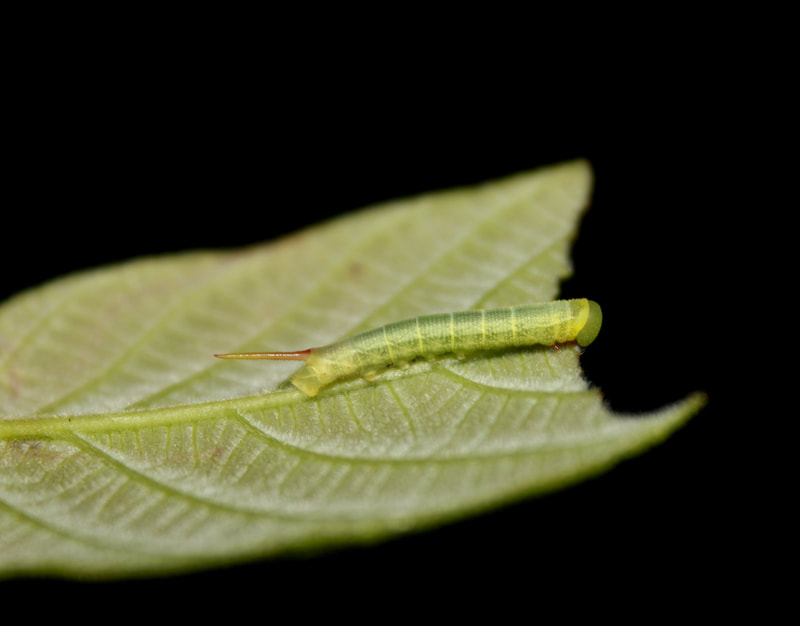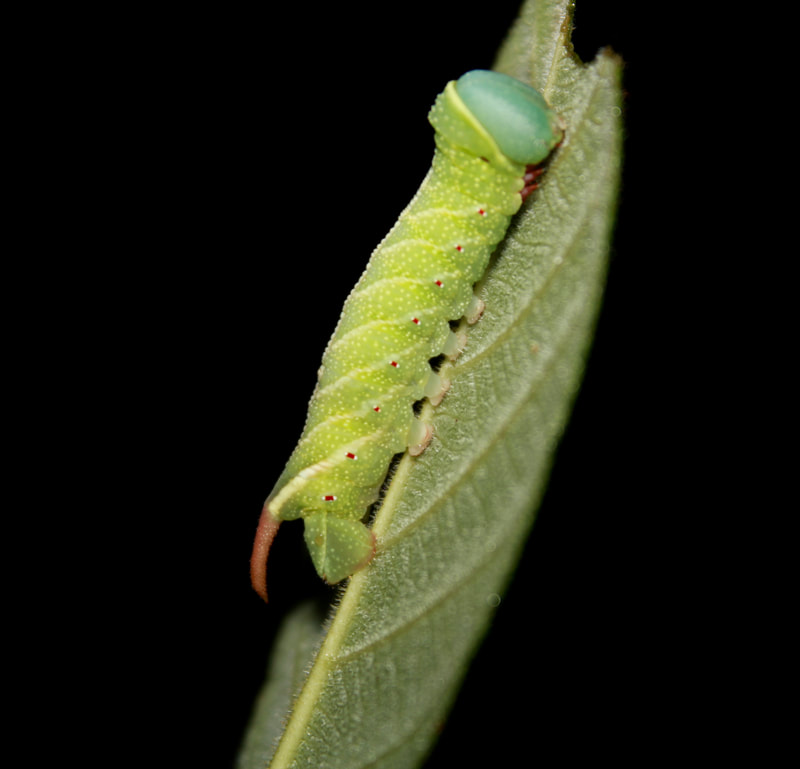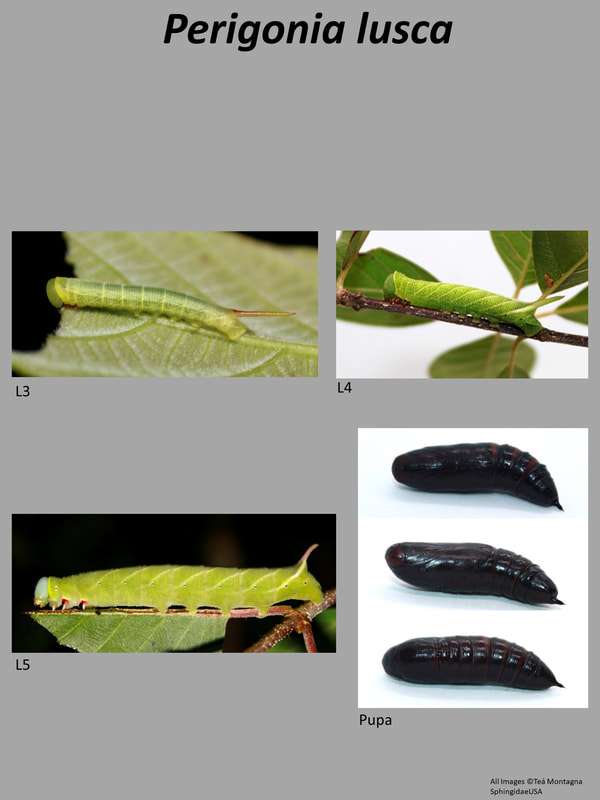|
Common Name: Half-Blind Sphinx
Ecology and Life History: This moth is active year-round in South Florida, and presumably also in South Texas, though it is unclear whether or not it is resident there. Adults are attracted to light, but can also be seen nectaring at flowers at dusk. Baiting trees in the right habitat may yield a curious adult. This species is not sexually dimorphic, though males are smaller than females. Eggs are laid on the new growth of their hostplants, Velvetseed (Guettarda sp.) and Tawnyberry Holly (Ilex krugiana) (2). Larvae feed on the undersides of the leaves, hiding along the mid-vein (2). Habitat and Searching for Larvae: Tuttle notes that larvae occupy two distinctly different habitats in South Florida. Some inhabit pinelands and feed on Velvetseed (Guettarda sp.) (2). Others occupy hammocks and feed on Tawnyberry Holly (2). Interestingly, the two do not mix and larvae eating one will not accept the other (2). On Key Largo, larvae are most often found on Guettarda sp. Larvae can be found virtually anywhere on the plant, though younger instars prefer new growth. Larvae are present year-round in South Florida. Larvae of all instars fluoresce brightly under UV light. Rearing Notes: Eggs are difficult to get from this species. It is possible that a large flight cage or greenhouse setup would make it easier. Larvae feed primarily on Guettarda species on Key Largo, but will take Ilex krugiana elsewhere. The larvae apparently will not switch between the hostplants (2). Larvae are very sensitive to rearing indoors and many perish. This is especially true when larvae are reared together. It is recommended to rear larvae singly in a well ventilated container or screen cage. As with other Guettarda feeding Sphingidae, it is easiest to sleeve larvae on the plant, as Guettarda doesn’t last long when picked. Alternative hostplants may be offered. Pupation is easy using the paper towel method, or by giving larvae substrate to bury into. Host plants: Click here to load this Caspio Cloud Database
Cloud Database by Caspio |
Adult Description: This is a small, fairly variable moth, with forewings 24-27mm (2). The forewings are brown, and usually are lighter in the submarginal area. This species is most easily determined by the hindwings (2). This species has black hindwings, with a yellow band occupying the inner margin. There is a blue spot on the anal angle.
Larval Description: L3: Larva is small and green with a long, relatively thin orange-red horn. The area between the segments is yellow-green. There is a slight yellow granulose collar behind the head. L4: Larva is larger, green with faint white abdominal lines. The last line that leads to the horn is quite bold and thick. The horn is more yellow-green in this instar and is also thick. The yellow collar behind the head is more pronounced. L5: This is a large larva with a blue-green head capsule with a yellow granulose collar. The spiracles are red. There are faint abdominal white lines with the last being thicker and leading to the horn. The horn is pinkish in color and slightly hooked backward.The thoracic legs are bordered in red. |
The gallery to the left contains photos of Perigonia lusca adults. If you have a photo that you would like to submit to us, please contact us.
The gallery to the right contains photos of Perigonia lusca larval and pupal stages. If you have a photo that you would like to submit to us, please contact us.
The gallery to the right contains photos of Perigonia lusca larval and pupal stages. If you have a photo that you would like to submit to us, please contact us.
